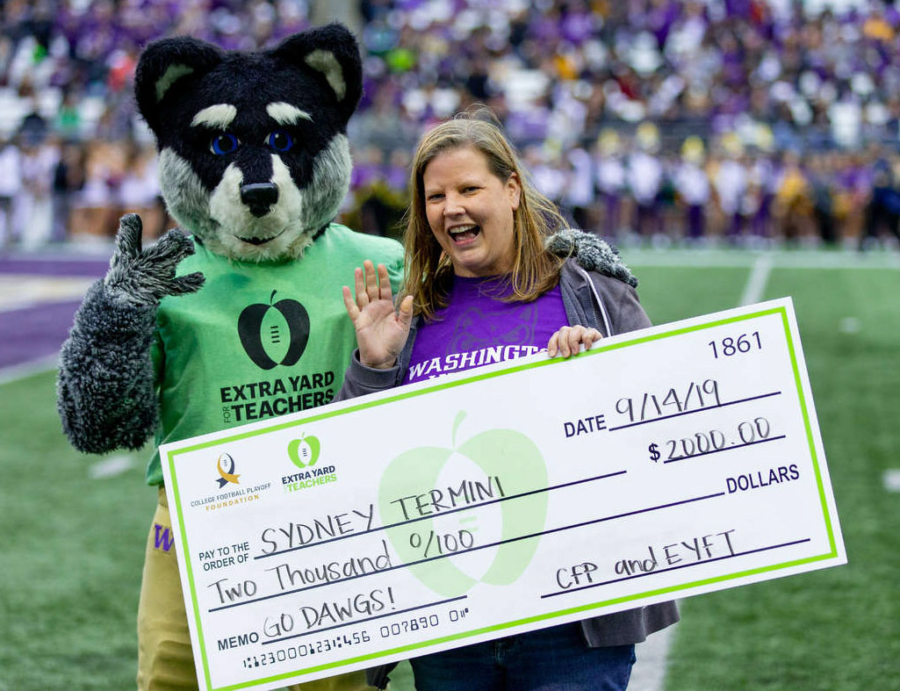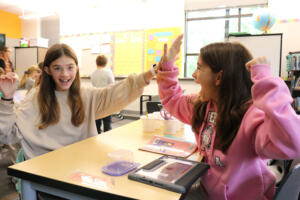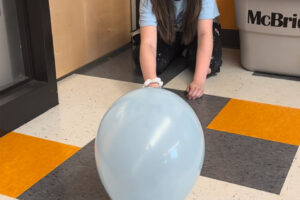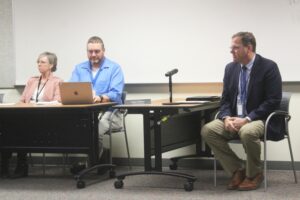Sydney Termini, a first-grade teacher at Columbia Gorge Elementary School (CRGE), generally prefers to labor in semi-obscurity, but on Sept. 14, everyone who watched the University of Washington (UW) football team’s game against the University of Hawaii at Husky Stadium in Seattle found out just how good Termini is at her job.
During the contest, Termini was honored as part of the College Football Playoff Foundation’s Extra Yard for Teachers Week, a nationwide program that recognizes teaching excellence.
At halftime, Termini and four other science, technology, engineering and mathematics (STEM) educators from Washington elementary schools walked to the middle of the playing field, were introduced to the thousands of people in attendance and a broadcast television audience, and received a $2,000 check for classroom use.
“It was kind of a blur. Terrifying, actually,” Termini said of the event. “We were on and off the field before we knew it. My legs were shaking, and I had a perma-grin on my face. It was something I don’t think I’ll forget. I took my son, Ben, with me down on the sidelines, and it was a big moment for him, too. It was a fun atmosphere.”
Educational Services District (ESD) 112 STEM director Vickei Hrdina nominated Termini for the award, but didn’t tell the teacher about the possible honor until a few days before the UW game. “It took me by surprise for sure. I was caught a little off guard,” Termini said. “But I was also really excited. Once I learned that I was one of five, I was taken aback. I felt honored and overwhelmed. (CRGE) had an assembly on the day before the game, and I had tears in my eyes.”




